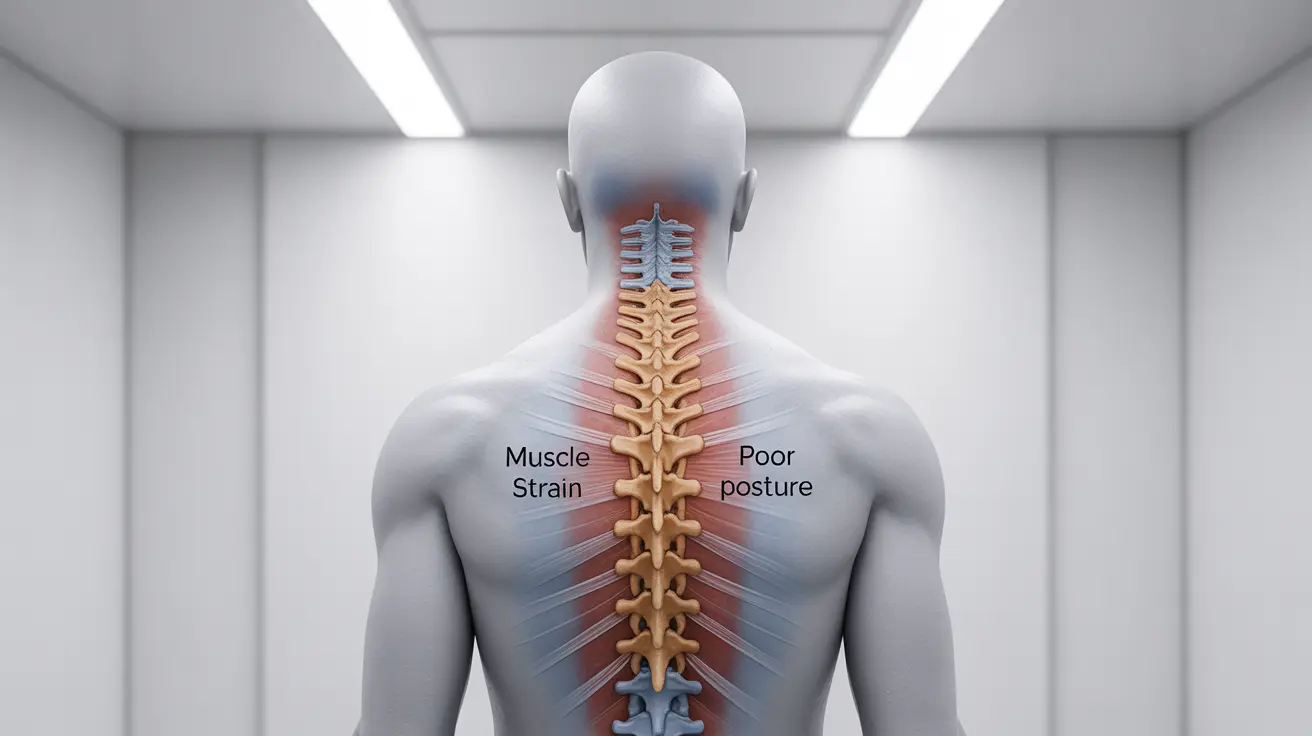Mid back pain can significantly impact your daily activities and quality of life. Located in the thoracic spine region, between your upper back and lower back, this type of discomfort affects many people for various reasons. Understanding the causes, recognizing warning signs, and knowing effective treatment options can help you manage this condition more effectively.
Whether you're experiencing occasional discomfort or chronic pain, this comprehensive guide will help you understand mid back pain better and explore various ways to find relief.
Common Causes of Mid Back Pain
Mid back pain can stem from several different sources, ranging from acute injuries to chronic conditions:
- Poor posture
- Muscle strain or overuse
- Spinal disc problems
- Sports injuries
- Workplace ergonomic issues
- Stress and tension
- Arthritis
- Osteoporosis
Understanding the underlying cause is crucial for effective treatment and prevention of future episodes.
Warning Signs and When to Seek Medical Help
While some mid back pain may resolve on its own, certain symptoms warrant immediate medical attention:
- Severe, persistent pain that doesn't improve with rest
- Pain accompanied by numbness or tingling
- Weakness in arms or legs
- Difficulty breathing
- Chest pain
- Loss of bladder or bowel control
- Fever
If you experience any of these symptoms, consult a healthcare provider promptly for proper evaluation and treatment.
Effective Home Remedies and Self-Care
Many cases of mid back pain can be managed effectively at home with various self-care techniques:
Heat and Ice Therapy
Alternate between heat and ice applications to help reduce pain and inflammation. Apply ice for 15-20 minutes during the first 24-48 hours, then switch to heat therapy to promote healing and increase blood flow.
Gentle Stretching and Exercise
Regular physical activity can help strengthen back muscles and improve flexibility. Focus on gentle stretches and exercises that target the mid back region, such as:
- Cat-cow stretches
- Thoracic extension exercises
- Gentle twisting stretches
- Wall angels
- Back strengthening exercises
Posture Improvement
Maintaining good posture is crucial for preventing and managing mid back pain. Ensure your workstation is ergonomically set up and take regular breaks from sitting to move and stretch.
Professional Treatment Options
When home remedies aren't providing sufficient relief, several professional treatment options are available:
Physical Therapy
A physical therapist can develop a customized exercise program to strengthen your back muscles, improve flexibility, and teach proper body mechanics.
Manual Therapy
Treatments such as massage, chiropractic care, or osteopathic manipulation can help alleviate pain and improve function.
Medical Interventions
In some cases, your healthcare provider might recommend:
- Prescription medications
- Injection therapy
- Advanced imaging studies
- Specialized treatment for underlying conditions
Prevention Strategies
Preventing mid back pain is often easier than treating it. Consider these preventive measures:
- Maintain good posture throughout the day
- Use proper lifting techniques
- Stay physically active
- Maintain a healthy weight
- Ensure adequate workplace ergonomics
- Practice stress management techniques
- Get regular exercise
Frequently Asked Questions
What are the most common causes of mid back pain and how can I identify them? Mid back pain commonly results from poor posture, muscle strain, and overuse injuries. You can identify the cause by noting when the pain occurs, what activities worsen it, and whether it's accompanied by other symptoms.
What symptoms of middle back pain indicate I should see a doctor immediately? Seek immediate medical attention if you experience severe, persistent pain, numbness or tingling, weakness in limbs, difficulty breathing, chest pain, or loss of bladder/bowel control.
What home remedies and exercises are effective for relieving mid back pain? Effective home remedies include heat and ice therapy, gentle stretching exercises, proper posture maintenance, and over-the-counter pain relievers. Specific exercises like cat-cow stretches and wall angels can help strengthen and stretch the mid back region.
How is mid back pain typically diagnosed and treated by healthcare professionals? Healthcare providers diagnose mid back pain through physical examination, medical history review, and sometimes imaging tests. Treatment may include physical therapy, manual therapy, medications, or other interventions based on the underlying cause.
Can poor posture lead to chronic middle back pain, and what are the best ways to prevent it? Yes, poor posture is a significant contributor to chronic mid back pain. Prevention includes maintaining good posture, using ergonomic furniture, taking regular breaks from sitting, and performing posture-strengthening exercises regularly.




